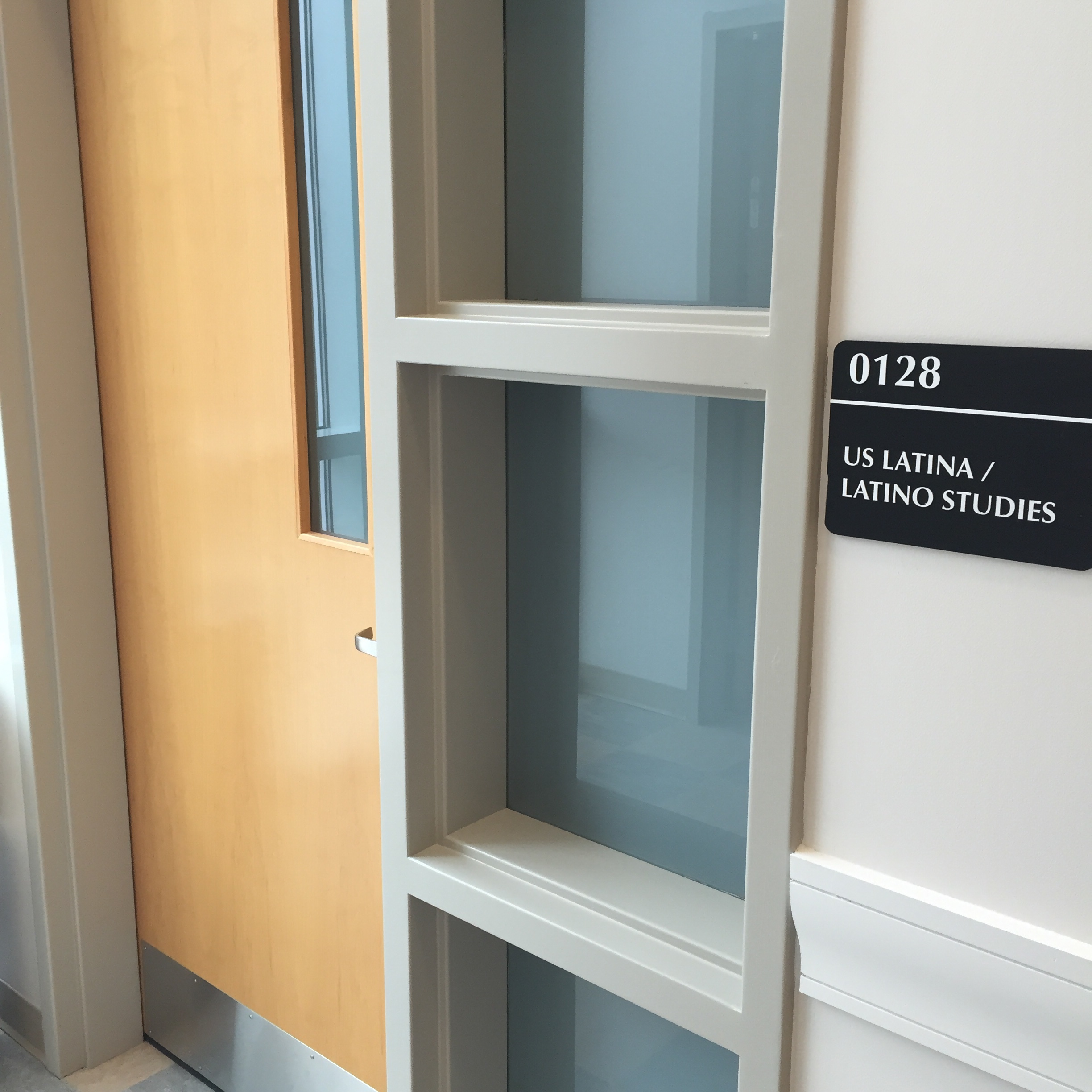Latinx University of Maryland students formerly had no specific place to call their own on the campus.
But now, the university has set aside a small room for them in the basement of Tawes Hall, and Latinx students are pushing for a full cultural center.
The university gave the room to the U.S. Latina/o Studies Program after its members requested a room that would help Latinx students feel more at home.
“The department became aware of a petition that students created about having a Latinx cultural center on campus,” said Nancy Mirabal, an American studies professor and director of the U.S. Latina/o Studies Program. “After the [Latina/o studies] and American studies departments moved to Tawes, we wanted to help the students out, and we were granted a room that is specifically for them.”
While this room is a start, senior Astrid Diaz said, Latinx students would eventually like to have an on-campus space similar to the Nyumburu Cultural Center.
“We envisioned having a center like Nyumburu on campus where there is space for people to have events, study areas and some kind of library that has books on our culture,” the American studies and anthropology major said.
Fidel Martinez, co-founder of the student group El Sol, said there is no reason not to have a Latinx cultural center on the campus, especially because other Big Ten schools, including Indiana University, have their own centers for Latinx culture. El Sol is putting together a proposal to create a center.
“While doing our research, we were comparing the retention rates from other Big Ten schools that have Latinx cultural centers and found that these centers help the retention and admission rates of Latinos on campus,” the senior broadcast journalism major said.
This university is not the only campus fighting for a Latinx cultural center, said Erica Puentes, president of Political Latinxs United for Movement and Action in Society and a junior African-American studies major. Students at Duke University and Georgetown University are also pushing for similar centers.
Martinez said everyone involved is extremely grateful to the U.S. Latina/o Studies Program for helping them get the room so students could continue building their community space. He noted Solomon Comissiong, Nyumburu’s assistant director of student involvement and public relations, in particular as someone who helped El Sol with the proposal for the Latinx cultural center.
“One of our biggest allies in this project, Dr. Solomon, told us of how Nyumburu got started,” Martinez said. “He said that they started in a small room above the diner and then expanded over the years. That is our hope for our center.”
If the university accepts the proposal, the center could eventually lead to more job opportunities for students, Puentes said.
“We want to be able to have access to job opportunities, having people actually working in the Latinx cultural center, like Nyumburu has,” Puentes said.
A center on the campus would also benefit the U.S. Latina/o studies minor, Diaz said. Diaz, who is pursuing that minor, noted that the center could bring more resources to the program.
Martinez said his mentee for La Familia, a program that mentors first-year and transfer Latinx students, told him the lack of Latinos and resources available has made him want to transfer out of the university.
“He told me that he wanted to transfer out of this school because the Latinidad wasn’t as prominent on this campus,” said Martinez. “There are Latinos on campus, but there aren’t that many accommodations done by the university to help express our Latinidad.”
Martinez is graduating this semester, but he said El Sol is trying to get its proposal approved to help influence future Latino students.
It was difficult finding other members of the Latinx community when he first came to the campus, Martinez said, noting that the population is often an invisible one, as “Latinos come in all color and diasporas.”
“I’m not doing this for myself,” Martinez said. “If we had this center, it would make it easier to connect with one another.”



